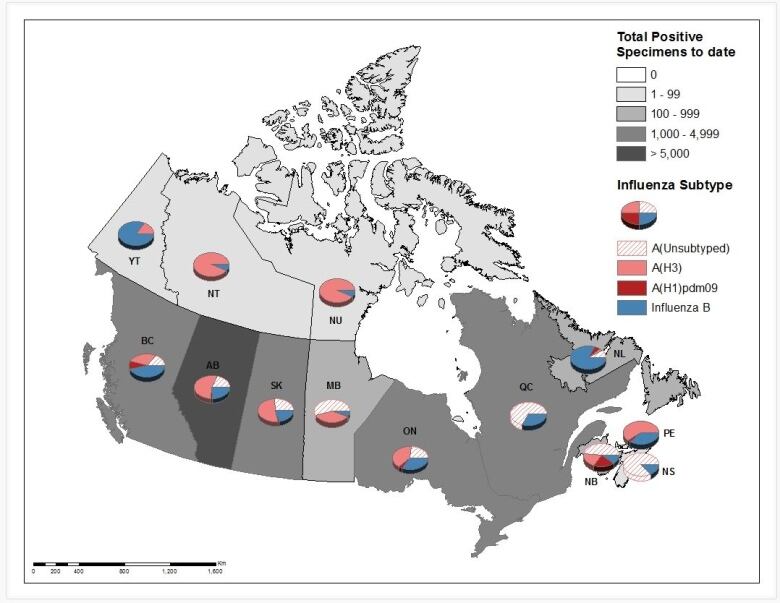Flu activity in Canada 'high' and continuing to rise, latest public health numbers say
More than 15,500 cases confirmed compared to about 9,000 this time last year

The number of people stricken by flu continues to rise across the country, with 15,572 laboratory-confirmed cases for the season as of Jan.6, the Public Health Agency of Canada says.
The level of influenza activity is "in the higher range of expected levels for this time of year," the agency said in its latest FluWatch report,released Friday.
Last year, there were far fewer cases,with 8,976 reported by the end of the first week of January 2017.
The majority of cases continue to be the H3N2subtype of Influenza A, a particularly brutal strain that tends to cause more severe illness, particularly among the elderly and children.
At the same time,Influenza B is "increasingly steadily," the report says, with 20 times more detectionsso far this season than for the same time period in the last seven years. The B strain started circulating much earlier than usual, the public health agency said.
The flu is affecting people over 65 years of age the most and there have been54 reported flu deaths in Canada this season, the FluWatchreport said.Fewer than five of those deaths were children.
There have been 1,850 reported hospitalizations 68 per cent of which have been seniors.

Bad flu season in U.S.
The U.S. is also experiencing a bad flu season, with the virus now widespread in every state except Hawaii, The Associated Press reported.
But in an update on Friday, the Centers for Disease Control and Prevention said patient traffic for flu at U.S. hospitals was no longer skyrocketing the way it was in December.
"It looks like it's starting to level out," said the CDC's Lynnette Brammer, who oversees flu tracking.
But flu is unpredictable, she added."I don't know where it will end up."
Vaccine effectiveness
H3N2, which isthe dominant fluin both Canada and the U.S., is prone to mutation, which can make the vaccine against it less effective even though it appears the virus strain was correctly predicted.Experts, including Canada's chief public health officer, have said that, although it's too early to tell for sure, the H3N2 component of this year's vaccine may have mutated during the manufacturing process, making it less effective.
Countries in the Southern Hemisphere, which have their flu season before Northern Hemisphere countries,experienced poor vaccine effectivenessagainstH3N2, leading health-care workers to anticipate similar results in Canada.
Despite that, health-care workers say it's still important for Canadians to get their flu shot partly, they say, because some protection against H3N2 is better than none. In addition, they saythe vaccine could offer good protectionagainst other flu strains in circulation, including Influenza B.
Doctors also sayresearch suggests that even if the vaccine doesn't prevent someone from getting the flu, it could help lessen the symptoms.
"Even though it's not perfect, it's still the best protection we have," said Dr. IsaacBogoch,an infectious disease specialist at University Health Network in Toronto.
With files from The Canadian Press and The Associated Press












_(720p).jpg)


 OFFICIAL HD MUSIC VIDEO.jpg)
.jpg)



























































































